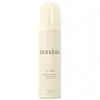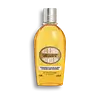What's inside
What's inside
 Key Ingredients
Key Ingredients

 Benefits
Benefits

 Concerns
Concerns

 Ingredients Side-by-side
Ingredients Side-by-side

Water
Skin ConditioningDecyl Glucoside
CleansingCaprylyl/Capryl Glucoside
CleansingGlycerin
HumectantButane
Sodium Cocoyl Isethionate
CleansingStearic Acid
CleansingPropane
Parfum
MaskingTerminalia Ferdinandiana Fruit Extract
AntioxidantMicrocitrus Australasica Fruit Extract
Tocopherol
AntioxidantPhenoxyethanol
PreservativeCaprylyl Glycol
EmollientCitric Acid
BufferingCoumarin
PerfumingBenzyl Salicylate
PerfumingBenzyl Alcohol
PerfumingBenzyl Benzoate
AntimicrobialWater, Decyl Glucoside, Caprylyl/Capryl Glucoside, Glycerin, Butane, Sodium Cocoyl Isethionate, Stearic Acid, Propane, Parfum, Terminalia Ferdinandiana Fruit Extract, Microcitrus Australasica Fruit Extract, Tocopherol, Phenoxyethanol, Caprylyl Glycol, Citric Acid, Coumarin, Benzyl Salicylate, Benzyl Alcohol, Benzyl Benzoate
Vitis Vinifera Seed Oil
EmollientTipa-Laureth Sulfate
CleansingLaureth-3
EmulsifyingCaprylic/Capric Triglyceride
MaskingParfum
MaskingCocamide Mea
EmulsifyingPropylene Glycol
HumectantSorbitan Oleate
EmulsifyingPrunus Amygdalus Dulcis Oil
Skin ConditioningCitrus Aurantium Bergamia Fruit Oil
MaskingHelianthus Annuus Seed Oil
EmollientRosmarinus Officinalis Leaf Extract
AntimicrobialTocopherol
AntioxidantWater
Skin ConditioningLimonene
PerfumingCoumarin
PerfumingLinalool
PerfumingVitis Vinifera Seed Oil, Tipa-Laureth Sulfate, Laureth-3, Caprylic/Capric Triglyceride, Parfum, Cocamide Mea, Propylene Glycol, Sorbitan Oleate, Prunus Amygdalus Dulcis Oil, Citrus Aurantium Bergamia Fruit Oil, Helianthus Annuus Seed Oil, Rosmarinus Officinalis Leaf Extract, Tocopherol, Water, Limonene, Coumarin, Linalool
 Reviews
Reviews

Ingredients Explained
These ingredients are found in both products.
Ingredients higher up in an ingredient list are typically present in a larger amount.
Coumarins are a group of substances found naturally in plants. There are over 1300 types of coumarins identified. It has a natural vanilla scent.
Coumarin is an identified EU known allergy, meaning it may cause an allergic reaction when applied to the skin.
In many countries, coumarin is banned as a food additive. However, it can be found in soaps, tobacco products, and some alcohol drinks.
Plants use coumarins as a chemical defense. Some plants that have coumarins include lavender, tonka beans, and yellow clovers.
Learn more about CoumarinParfum is a catch-all term for an ingredient or more that is used to give a scent to products.
Also called "fragrance", this ingredient can be a blend of hundreds of chemicals or plant oils. This means every product with "fragrance" or "parfum" in the ingredients list is a different mixture.
For instance, Habanolide is a proprietary trade name for a specific aroma chemical. When used as a fragrance ingredient in cosmetics, most aroma chemicals fall under the broad labeling category of “FRAGRANCE” or “PARFUM” according to EU and US regulations.
The term 'parfum' or 'fragrance' is not regulated in many countries. In many cases, it is up to the brand to define this term.
For instance, many brands choose to label themselves as "fragrance-free" because they are not using synthetic fragrances. However, their products may still contain ingredients such as essential oils that are considered a fragrance by INCI standards.
One example is Calendula flower extract. Calendula is an essential oil that still imparts a scent or 'fragrance'.
Depending on the blend, the ingredients in the mixture can cause allergies and sensitivities on the skin. Some ingredients that are known EU allergens include linalool and citronellol.
Parfum can also be used to mask or cover an unpleasant scent.
The bottom line is: not all fragrances/parfum/ingredients are created equally. If you are worried about fragrances, we recommend taking a closer look at an ingredient. And of course, we always recommend speaking with a professional.
Learn more about ParfumTocopherol (also known as Vitamin E) is a common antioxidant used to help protect the skin from free-radicals and strengthen the skin barrier. It's also fat soluble - this means our skin is great at absorbing it.
Vitamin E also helps keep your natural skin lipids healthy. Your lipid skin barrier naturally consists of lipids, ceramides, and fatty acids. Vitamin E offers extra protection for your skin’s lipid barrier, keeping your skin healthy and nourished.
Another benefit is a bit of UV protection. Vitamin E helps reduce the damage caused by UVB rays. (It should not replace your sunscreen). Combining it with Vitamin C can decrease sunburned cells and hyperpigmentation after UV exposure.
You might have noticed Vitamin E + C often paired together. This is because it is great at stabilizing Vitamin C. Using the two together helps increase the effectiveness of both ingredients.
There are often claims that Vitamin E can reduce/prevent scarring, but these claims haven't been confirmed by scientific research.
Learn more about TocopherolWater. It's the most common cosmetic ingredient of all. You'll usually see it at the top of ingredient lists, meaning that it makes up the largest part of the product.
So why is it so popular? Water most often acts as a solvent - this means that it helps dissolve other ingredients into the formulation.
You'll also recognize water as that liquid we all need to stay alive. If you see this, drink a glass of water. Stay hydrated!
Learn more about Water